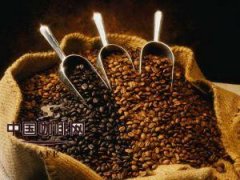Basic knowledge of high-quality coffee beans to distinguish the freshness of coffee beans
Nose smell: fresh coffee beans smell strong fragrance, otherwise tasteless or bad smell.

Look at it: good coffee beans are complete in shape and full in size. On the contrary, the shape is incomplete.
Hand pressure: fresh coffee beans are fresh and crisp, and the fragrance comes out when they crack.
Color: dark black coffee beans, the coffee brewed has a bitter taste; yellow coffee beans, the coffee brewed has a sour taste.
Important Notice :
前街咖啡 FrontStreet Coffee has moved to new addredd:
FrontStreet Coffee Address: 315,Donghua East Road,GuangZhou
Tel:020 38364473
- Prev

Café Life Cafes in Paris with a human touch
Paris, as the world's art center, reached unprecedented prosperity before World War II. Like Picasso, Stein, Hemingway, Joyce and so on have lived in Paris for many years, some even died in Paris. Even after the war, Paris was a dream place for writers and artists from all over the world, such as famous Latin American writers Marquez and Neruda. Latin American magic reality master
- Next

Basic knowledge of boutique coffee to distinguish between good and bad coffee beans
Good coffee beans: neat shape, bright color, roasted by single stir-fry. After brewing and cooking, it is mellow and full of stamina. Bad coffee beans: different shapes and incomplete individuals. After cooking, it is light and fragrant, not sweet enough.
Related
- Beginners will see the "Coffee pull flower" guide!
- What is the difference between ice blog purified milk and ordinary milk coffee?
- Why is the Philippines the largest producer of crops in Liberia?
- For coffee extraction, should the fine powder be retained?
- How does extracted espresso fill pressed powder? How much strength does it take to press the powder?
- How to make jasmine cold extract coffee? Is the jasmine + latte good?
- Will this little toy really make the coffee taste better? How does Lily Drip affect coffee extraction?
- Will the action of slapping the filter cup also affect coffee extraction?
- What's the difference between powder-to-water ratio and powder-to-liquid ratio?
- What is the Ethiopian local species? What does it have to do with Heirloom native species?

